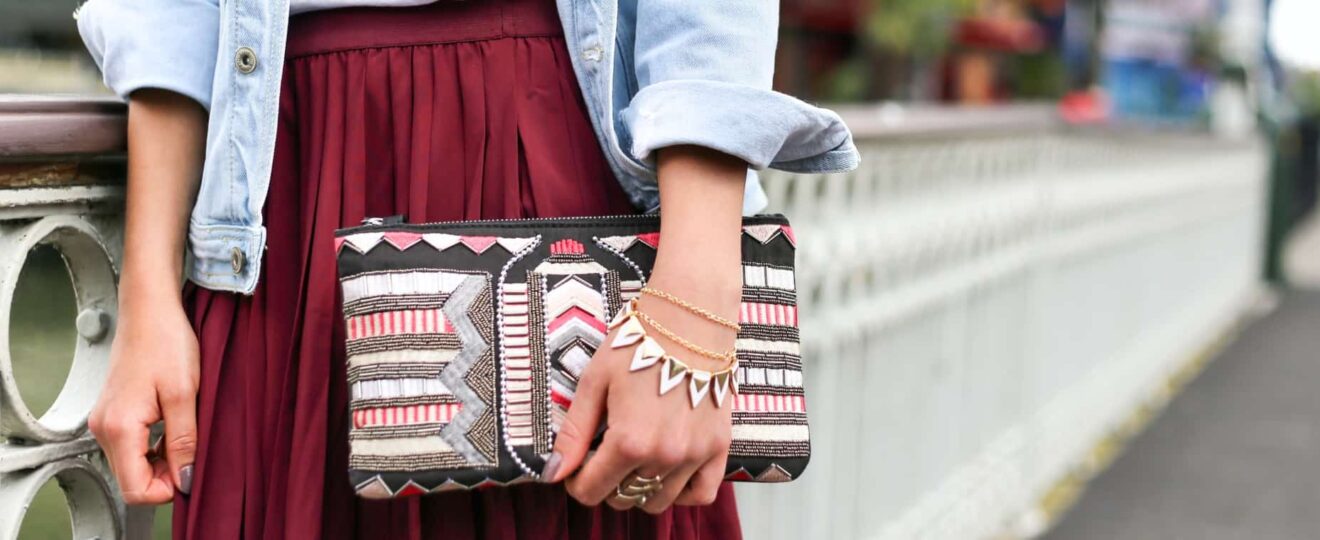A hairstyle, hairdo, or haircut refers to the styling of hair, usually on the human scalp. Sometimes, this could also mean an editing of beard hair.
The fashioning of hair can be considered an aspect of personal grooming, fashion, and cosmetics, although practical, cultural, and popular considerations also influence some hairstyles. The oldest known depiction of hair braiding dates back about 30,000 years.
 The beginning in Europe of continual and increasingly rapid change in clothing styles can be fairly reliably dated. Historians, including James Laver and Fernand Braudel, date the start of Western fashion in clothing to the middle of the 14th century,though it should be noted that they tend to rely heavily on contemporary imagery and illuminated manuscripts were not common before the fourteenth century.
The beginning in Europe of continual and increasingly rapid change in clothing styles can be fairly reliably dated. Historians, including James Laver and Fernand Braudel, date the start of Western fashion in clothing to the middle of the 14th century,though it should be noted that they tend to rely heavily on contemporary imagery and illuminated manuscripts were not common before the fourteenth century.
The most dramatic early change in fashion was a sudden drastic shortening and tightening of the male over-garment from calf-length to barely covering the buttocks, sometimes accompanied with stuffing in the chest to make it look bigger. This created the distinctive Western outline of a tailored top worn over leggings or trousers.
In many cultures, often for religious reasons, women’s hair is covered while in public, and in some, such as Haredi Judaism or European Orthodox communities.Women’s hair is shaved or cut very short, and covered with wigs. Only since the end of World War I have women begun to wear their hair short and in fairly natural styles.In both the 1960s and 1970s many men and women wore their hair very long.
Hairstyles are markers and signifiers of social class, age, marital status, racial identification, political beliefs, and attitudes about gender. In many cultures, often for religious reasons, women’s hair is covered while in public, and in some, such as Haredi Judaism or European Orthodox communities, women’s hair is shaved or cut very short, and covered with wigs. Only since the end of World War I have women begun to wear their hair short and in fairly natural styles. In both the 1960s and 1970s many men and women wore their hair very long and straight.In the 1980
The greatest gift of life is friendship, and I have received it.
– Hubert H. Humphrey
 In the early 17th century male hairstyles grew longer, with waves or curls being considered desirable. In the later half.Hairstyles are markers and signifiers of social class, age, marital status, racial identification, political beliefs, and attitudes about gender. In many cultures, often for religious reasons, women’s hair is covered while in public, and in some, such as Haredi Judaism or European Orthodox communities, women’s hair is shaved or cut very short, and covered with wigs.Only since the end of World War I have women begun to wear their hair short and in fairly natural styles. In both the 1960s and 1970s many men and women wore their hair very long.
In the early 17th century male hairstyles grew longer, with waves or curls being considered desirable. In the later half.Hairstyles are markers and signifiers of social class, age, marital status, racial identification, political beliefs, and attitudes about gender. In many cultures, often for religious reasons, women’s hair is covered while in public, and in some, such as Haredi Judaism or European Orthodox communities, women’s hair is shaved or cut very short, and covered with wigs.Only since the end of World War I have women begun to wear their hair short and in fairly natural styles. In both the 1960s and 1970s many men and women wore their hair very long.
Fashion is a popular style or practice, especially in clothing, footwear, accessories, makeup, hairstyle and body. Fashion is a distinctive and often constant trend in the style in which a person dresses. It is the prevailing styles in behavior and the newest creations of textile designers. Because the more technical term costume is regularly linked to the term “fashion”, the use of the former has been relegated to special senses like fancy dress or masquerade wear, while “fashion” generally means clothing, including the study of it. Although aspects of fashion can be feminine or masculine, some trends are androgynous.
Style Guide
In Imperial Rome, women wore their hair in complicated styles. From the time of the Roman Empire until the Middle Ages, most women grew their hair as long as it would naturally grow.
The greatest gift of life is friendship, and I have received it.
– Hubert H. Humphrey
 Hairstyles are markers and signifiers of social class, age, marital status, racial identification, political beliefs, and attitudes about gender. In many cultures, often for religious reasons, women’s hair is covered while in public, and in some, such as Haredi Judaism or European Orthodox communities, women’s hair is shaved or cut very short, and covered with wigs. Only since the end of World War I have women begun to wear their hair short and in fairly natural styles.In both the 1960s and 1970s many men and women wore their hair very long and straight.In the 1980s. Hairstyles are markers and signifiers of social class, age, marital status, racial identification, political beliefs, and attitudes about gender.
Hairstyles are markers and signifiers of social class, age, marital status, racial identification, political beliefs, and attitudes about gender. In many cultures, often for religious reasons, women’s hair is covered while in public, and in some, such as Haredi Judaism or European Orthodox communities, women’s hair is shaved or cut very short, and covered with wigs. Only since the end of World War I have women begun to wear their hair short and in fairly natural styles.In both the 1960s and 1970s many men and women wore their hair very long and straight.In the 1980s. Hairstyles are markers and signifiers of social class, age, marital status, racial identification, political beliefs, and attitudes about gender.
In many cultures, often for religious reasons, women’s hair is covered while in public, and in some, such as Haredi Judaism or European Orthodox communities. Women’s hair is shaved or cut very short, and covered with wigs. Only since the end of World War I have women begun to wear their hair short and in fairly natural styles. In both the 1960s and 1970s many men and women wore their hair very long.
In many cultures, often for religious reasons, women’s hair is covered while in public, and in some, such as Haredi Judaism or European Orthodox communities. Women’s hair is shaved or cut very short, and covered with wigs. Only since the end of World War I have women begun to wear their hair short and in fairly natural styles. In both the 1960s and 1970s many men and women wore their hair very long.
The greatest gift of life is love and I have received it.
Fashion is a popular style or practice, especially in clothing, footwear, accessories, makeup, hairstyle and body. Fashion is a distinctive and often constant trend in the style in which a person dresses. It is the prevailing styles in behavior and the newest creations of textile designers. Because the more technical term costume is regularly linked to the term “fashion”, the use of the former has been relegated to special senses like fancy dress or masquerade wear, while “fashion” generally means clothing, including the study of it. Although aspects of fashion can be feminine or masculine, some trends are androgynous.
The greatest gift of life is love and I have received it.
Fashion is a popular style or practice, especially in clothing, footwear, accessories, makeup, hairstyle and body. Fashion is a distinctive and often constant trend in the style in which a person dresses. It is the prevailing styles in behavior and the newest creations of textile designers. Because the more technical term costume is regularly linked to the term “fashion”, the use of the former has been relegated to special senses like fancy dress or masquerade wear, while “fashion” generally means clothing, including the study of it. Although aspects of fashion can be feminine or masculine, some trends are androgynous.
Heading 1
The notion of a global fashion industry is a product of the modern age. Prior to the mid-19th century, most clothing was custom-made. It was handmade for individuals, either as home production or on order from dressmakers and tailors. By the beginning of the 20th century—with the rise of new technologies such as the sewing machine.
Heading 2
Although the fashion industry developed first in Europe and America, as of 2015, it is an international and highly globalized industry, with clothing often designed in one country, manufactured in another, and sold worldwide. For example, an American fashion company might source fabric in China and have the clothes manufactured in Vietnam, finished in Italy.
Heading 3
Shipped to a warehouse in the United States for distribution to retail outlets internationally. The fashion industry has long been one of the largest employers in the United States, and it remains so in the 21st century. However, U.S. employment declined considerably as production increasingly moved overseas, especially to China.
Heading 4
Because data on the fashion industry typically are reported for national economies and expressed in terms of the industry’s many separate sectors, aggregate figures for world production of textiles and clothing are difficult to obtain. However, by any measure, the clothing industry accounts for a significant share of world economic output. The fashion industry consists of four levels.
Heading 5
These levels consist of many separate but interdependent sectors. These sectors are Textile Design and Production, Fashion Design and Manufacturing, Fashion Retailing, Marketing and Merchandising, Fashion Shows, and Media and Marketing. Each sector is devoted to the goal of satisfying consumer demand for apparel under conditions that enable participants in the industry to operate at a profit.
Heading 6
These levels consist of many separate but interdependent sectors. These sectors are Textile Design and Production, Fashion Design and Manufacturing, Fashion Retailing, Marketing and Merchandising, Fashion Shows, and Media and Marketing. Each sector is devoted to the goal of satisfying consumer demand for apparel under conditions that enable participants in the industry to operate at a profit.
Code Formatting
pre {
position: relative;
background: #f7f7f7;
font-family: "Courier 10 Pitch", Courier, monospace;
font-size: 15px;
font-size: 1.5rem;
line-height: 1.6;
margin-bottom: 1.6em;
padding: 1.6em;
overflow: auto;
max-width: 100%;
tab-size: 4;
}
Text Highlight Style
Nam non facilisis justo, a molestie metus. Morbi vehicula urna in fermentum congue. Sed volutpat lacus quis justo finibus congue. Curabitur in leo nibh. Quisque a scelerisque metus.
Table Styles
| Beatle | Instrument | Song |
|---|---|---|
| John Lennon | Guitar | A Day In the Life |
| George Harrison | Guitar | Old Brown Shoe |
| Paul McCartney | Bass | Helter Skelter |
| Ringo Starr | Drums | Don’t Pass Me By |
Mixed List Items
- Unordered list item one
- Unordered list item two
- Ordered list item one
- Ordered list item two
- Unordered list item one
- Unordered list item two
- Ordered list item one
- Ordered list item two
- Ordered list item three
- Unordered list item three
- Ordered list item three
- Unordered list item three







